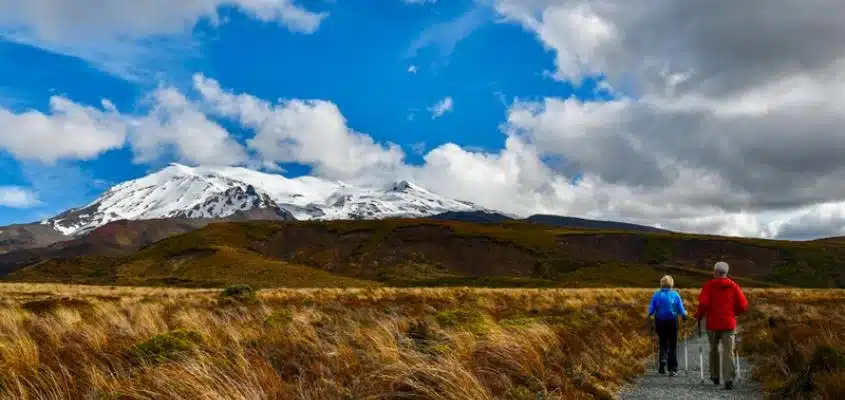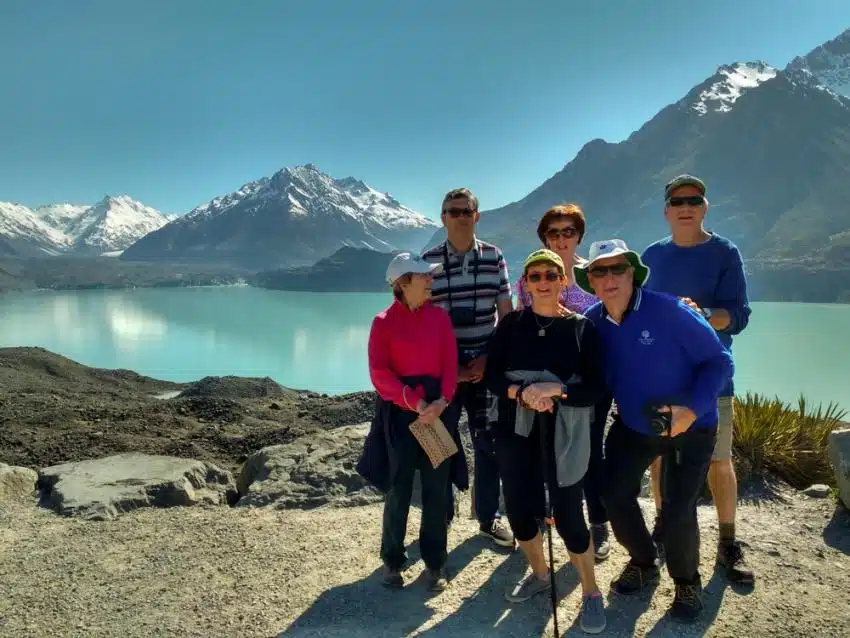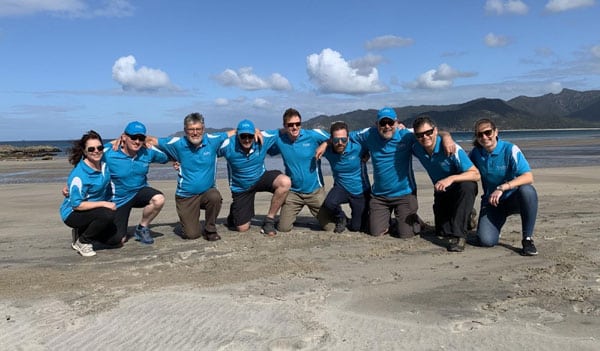Travelling in New Zealand’s North Island and want to find the best easy day walks you can enjoy easily on route without too much preparation? Here’s a handy guide to the North Island’s best day walks, including our favourites in the Bay of Islands, Auckland, Rotorua, Tongariro and Wellington. We’ve included key facts like how to get there, distances, time and what you’ll see on the way. Enjoy and happy walking!
Rangitoto Island Day Walk – Auckland
Rising from the Hauraki Gulf, the conical Rangitoto Island is a short ferry ride from downtown Auckland. On a day out to the island you’ll have plenty of time to explore the beaches and climb to the summit of this dormant volcano on formed paths across ancient lava fields and, in the summer, amongst blazing red pohutukawa. Enjoy your picnic lunch at the top with the best views of the Gulf and city.
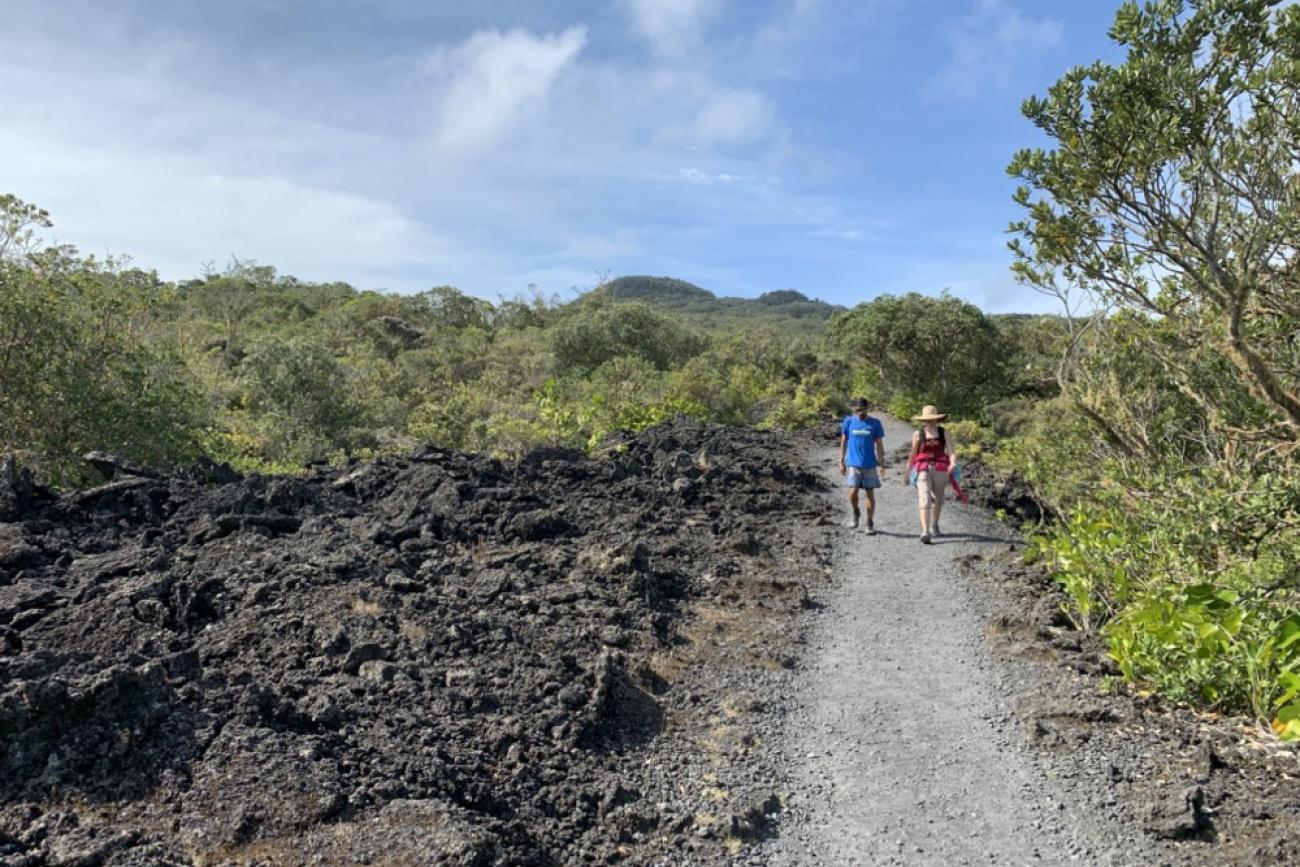
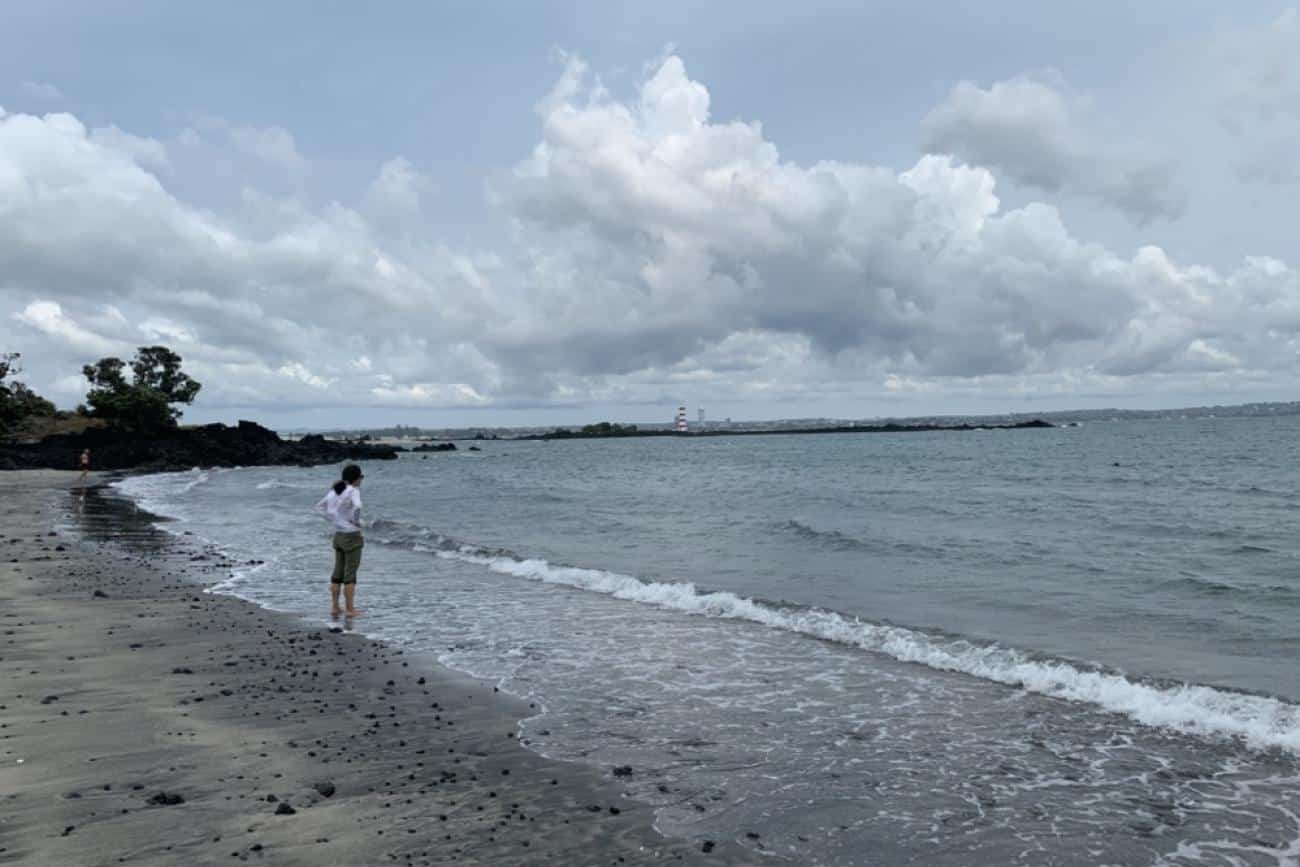
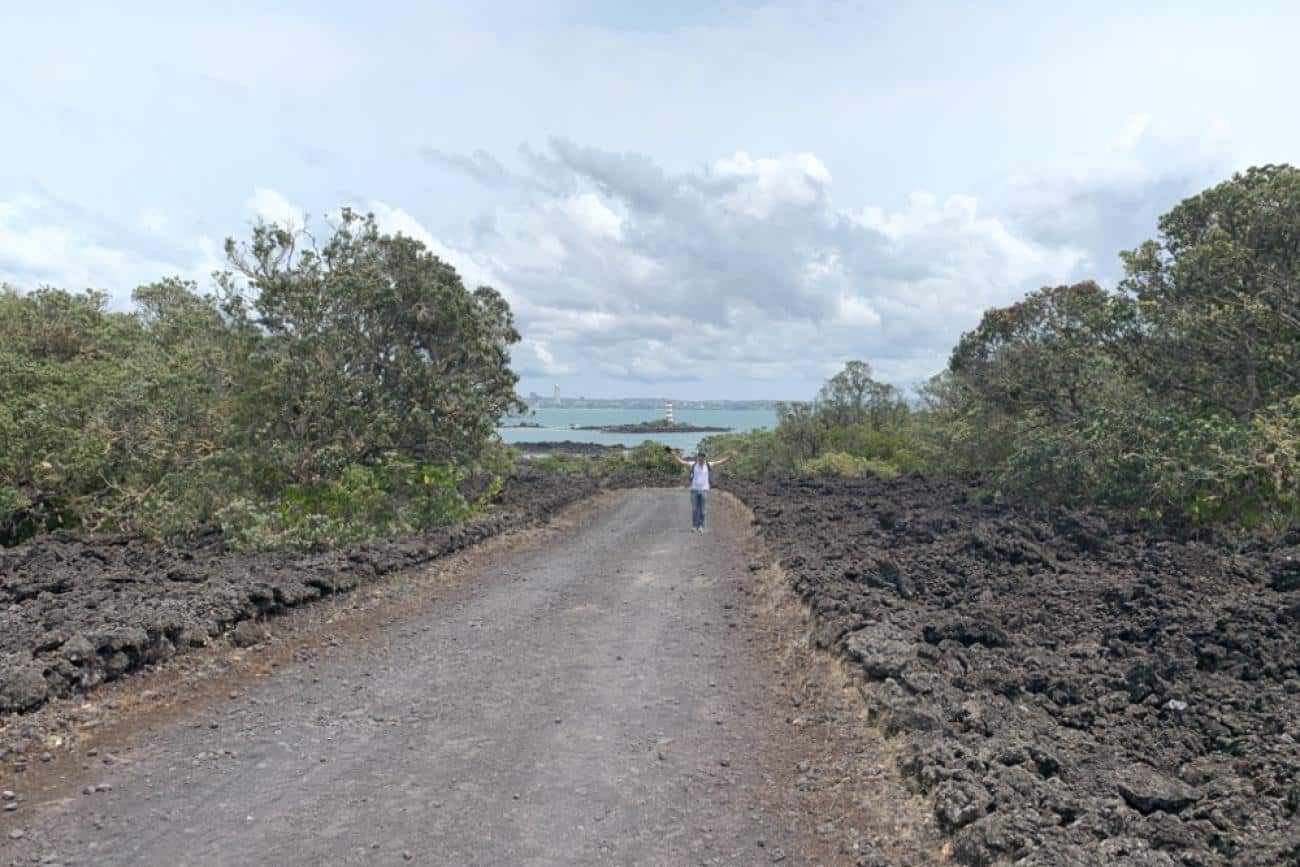
Walking Rangitoto Island – Key Facts
Grade: Easy to moderate walking with a gradual incline. Reasonable level of fitness required.
How to get there: Ferry from the Downtown Ferry Terminal Pier 4, downtown Auckland to Rangitoto Wharf at 9.15a.m., 10.30a.m, or 12.15p.m. Extra sailings Saturdays and Sundays at 7.30a.m. Twenty-five minute journey. Alternatively, Auckland Sea Shuttles offer chartered water taxi services.
Options for guided tour: Te Haerenga operate a fully guided day tour which includes the ferry, lunch and gear. This is a Māori tourism business owned by Auckland Iwi Ngāi Tai ki Tāmaki, you’ll learn about their history and stories of their ancestors on Rangitoto and neighbouring Motutapu Island.
Options for independent: Easily walked independently, make sure you bring your own lunch and plenty of water.
Length: 8 – 15 kilometres/4.3 – 9.3 miles, depending on which tracks you walk.
Walking Options: Include the Lava Caves Track, 15 minutes one way off the Summit Track. It’s around one hour to the lava caves from Rangitoto Wharf. Take a torch for exploring.
Walk the Wilson Park Track to the summit, 1 hour 45 minutes one way. This track branches off the Summit Track before the Lava Caves Track. Some of it is over uneven lava fields.
For a longer walk, take the gravelled road, (50 metres from the wharf, pass the shelter, keeping the toilets on your left) to Mackenzie Bay. The road follows the water’s edge and takes around 1.5 hours. About ten minutes before Mackenzie Bay is the Summit turnoff. From there, it’s an hour, fifteen minute walk to the summit.
Visit the iconic 1930’s baches not far from the wharf. One is now a museum – open Sundays in summer or by appointment.
Walking Time: 2 hours return on Summit Track, 5 – 6 hours via Mackenzie Bay to Summit and back down to the ferry
Elevation: 260 metres/850 feet.
Facilities: Toilets at Rangitoto Wharf, Mackenzie Bay, Islington Bay Wharf. Shelter and emergency telephone at Rangitoto Wharf. No food or water available on the island, make sure you take everything you need.
Wildlife: Shore birds including New Zealand dotterel and variable oystercatcher. Native forest birds such as New Zealand pigeon, parakeet and morepork (owl), fantail, whitehead bellbird, grey warbler and saddleback. Neighbouring Motutapu has a population of our rarest birds, the Takahe and Kiwi, and sometimes they wander over the causeway on to Rangitoto. Sea birds. Copper, suter and moko skinks. Common and Pacific geckos.
Flora: Largest pohutukawa forest in the world. Two hundred species of native trees and flowering plants. Ferns, orchids, mangroves.
Walking Tips: Take food and water – nothing available on the island. No rubbish bins – take your rubbish back with you. Wear good sturdy footwear. Heading for McKenzie Bay? Take swimming gear. Wasps are around over the summer. Rangitoto is a smoke free island, including vaping.
More Info: Visit the Rangitoto Island Page on the DOC website
See our tours which include walking in Auckland
Four of our small group tours start in Auckland and lots of our guests arrive a few days early to explore the city and of course the beautiful harbour. A day walk out on Rangitoto Island is a great way to acclimatize yourself to New Zealand and get the best views of Auckland too. Here are some of our tours which start in Auckland which you can easily add a day walk to Rangitoto into:
Kakapo 21 Day North & South Island Tour
Kaka 17 Day North & South Island Tour
Tongariro Alpine Crossing
The Tongariro Alpine Crossing is one of New Zealand’s Great Walks, and a World Heritage Site, achievable by fit walkers. Experience barren volcanic landscapes, intensely blue and green lakes, views of surrounding volcanoes and verdant forest. Some parts can be steep, but it’s so worthwhile, described as one of the best one day walks in the world.
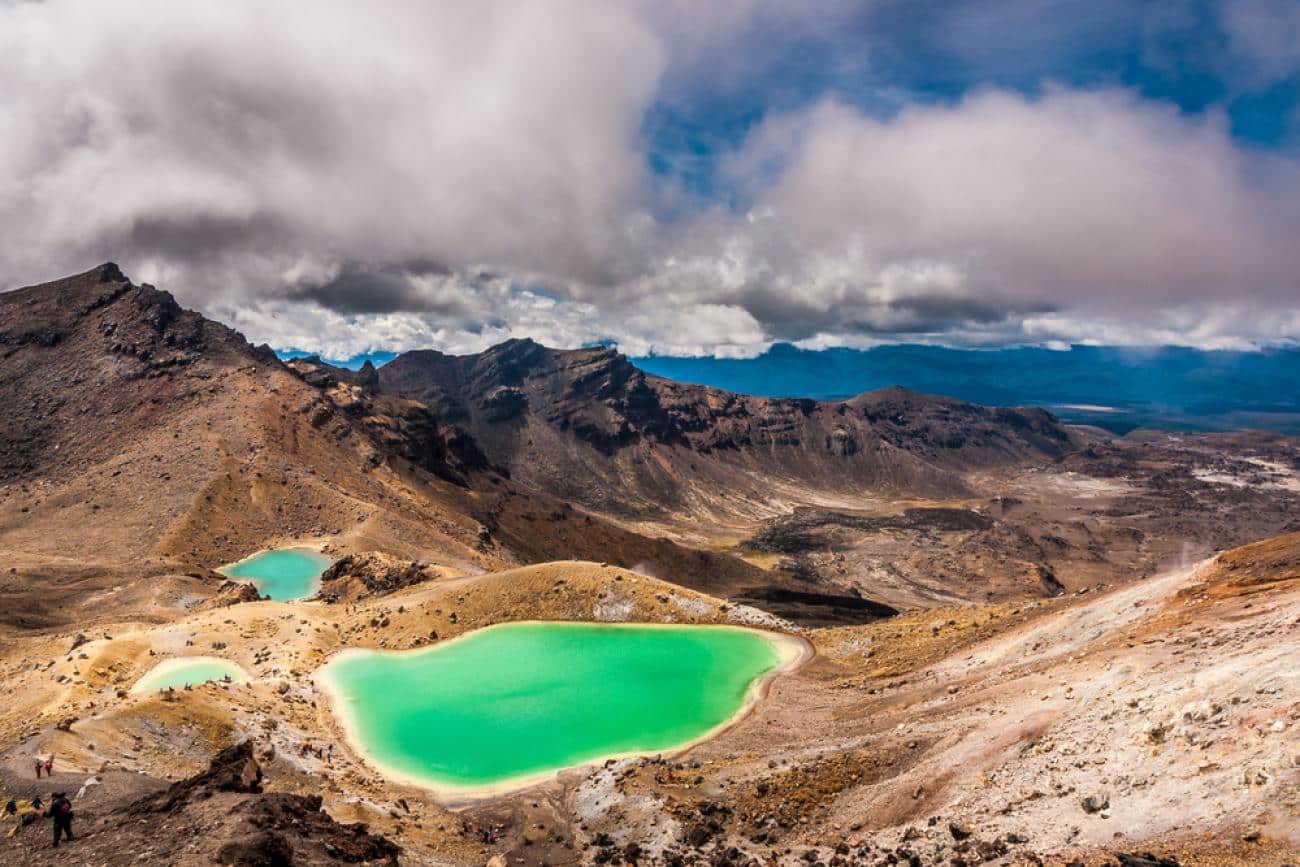
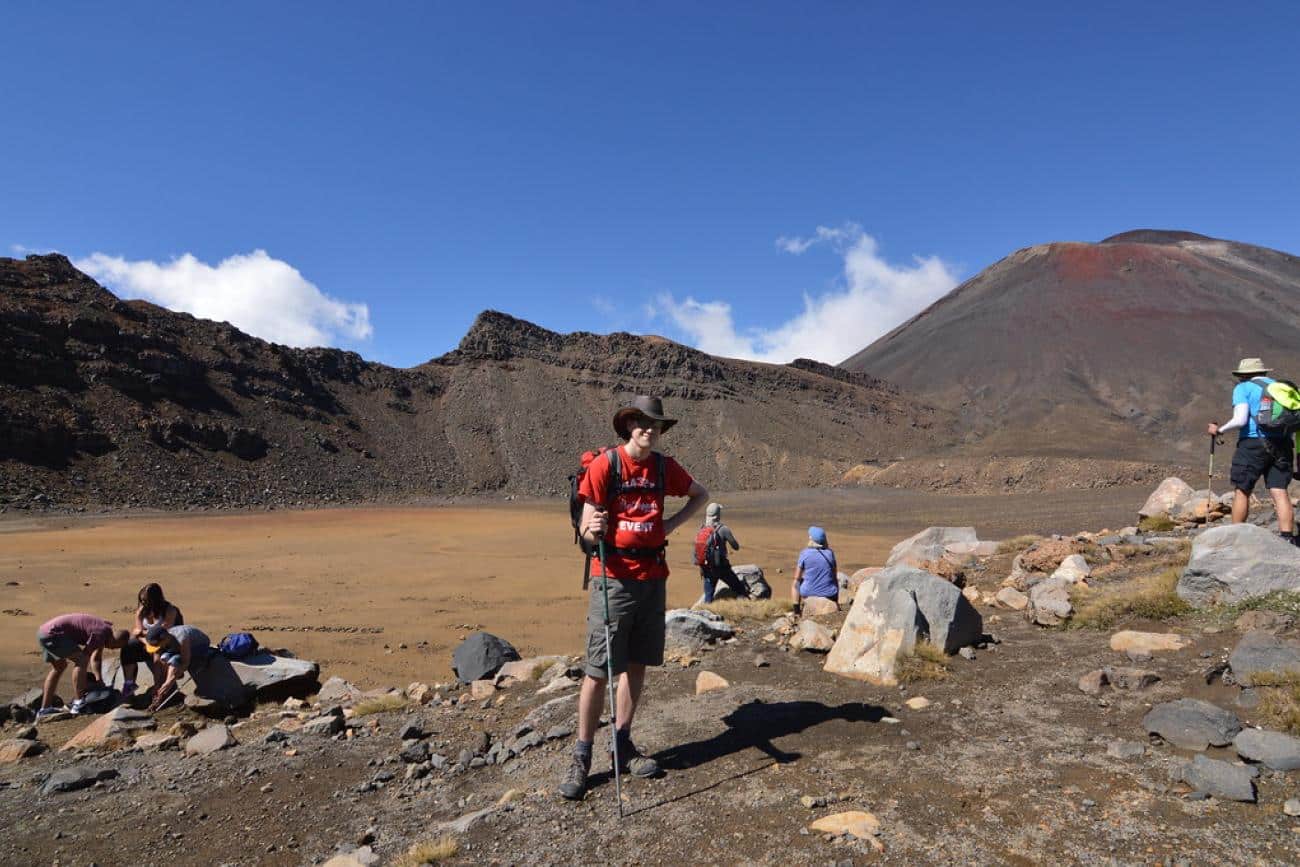
Walking the Tongariro Crossing – Key Facts
Grade: Good fitness required, this is an alpine walk for experienced strong walkers.
How to get there: Arrange a shuttle from National Park Village (13.5km), Whakapapa Village (10.4km), Turangi (36.7km), Raetihi (47.6km), Ohakune (48km), Taumaranui (61.5km), or Taupo (86km) to Mangatepopo Road carpark (start of the trail) and pickup from Ketetahi carpark (trail end). Alternatively park at Ketetahi carpark and arrange a shuttle to Mangatepopo Road carpark.
Options for guided/independent: Several companies offer guided walks or it can be done independently.
From May – October alpine skills are required, a guide is recommended.
Distance: 19.4 kilometres/12 miles
Walking Options: Walk the first section of the Crossing, Mangatepopo to Soda Springs. Gently climbs alongside a stream and edges of lava flow. Ends at Mt Ngauruhoe. A short side track leads to the clear effervescent waters of Soda Springs. Three hour return – 8 kilometres. Grade: Easy to moderate.
Time: 7 – 8 hours, full Crossing. In winter: 9-10 hours.
Highest Point: 1886m / 6188 ft.
Elevation change: Approx. 1196m./3924ft.
Facilities: Toilets every 1 – 2 hours along the track. Take toilet paper.
Wildlife: In forested areas, bellbirds, tui, NZ robin, tomtit, fantail and rifleman.
Flora: Upper slopes: Red tussock, wild-growing pink heather, yellow flowered broom shrub. Lower slopes: Podocarp-hardwood forest which may include rimu, kahikatea, miro, mataī and totara and ferns.
Walking Tips: Shuttle providers can offer back-up should you suffer a mishap. Check weather conditions and volcanic activity before climbing. Take food and plenty of fluid, especially in summer. Wear strong, sturdy footwear (uneven volcanic terrain)
Whatever the season, take warm clothing layers: woollen or polypropylene thermals and fleece, hat, gloves, waterproof and wind-proof raincoat and trousers. Conditions can change. Carry sunscreen, sunglasses, first aid kit, map, cell phone.
More Info: Visit the Tongariro Crossing page on the Department of Conservation website.
We don’t include the Tongariro Crossing in any of our tours, but do stay overnight in the Chateau Tongariro and lots of our guests explore the shorter walks in the National Park.
Taranaki Falls – A shorter alternative to the Tongariro Crossing
No time to do the Tongariro Alpine Crossing? This alternative will give you spectacular views, on a clear day, of some of the majestic volcanic peaks you’d see on the Crossing. Walk through vistas of red tussock grass, Manuka and alpine shrubs to linger at thundering Taranaki Falls. Relax awhile before enjoying Cascade Falls which descend into a picturesque, narrow, green gorge then wander beech forest.
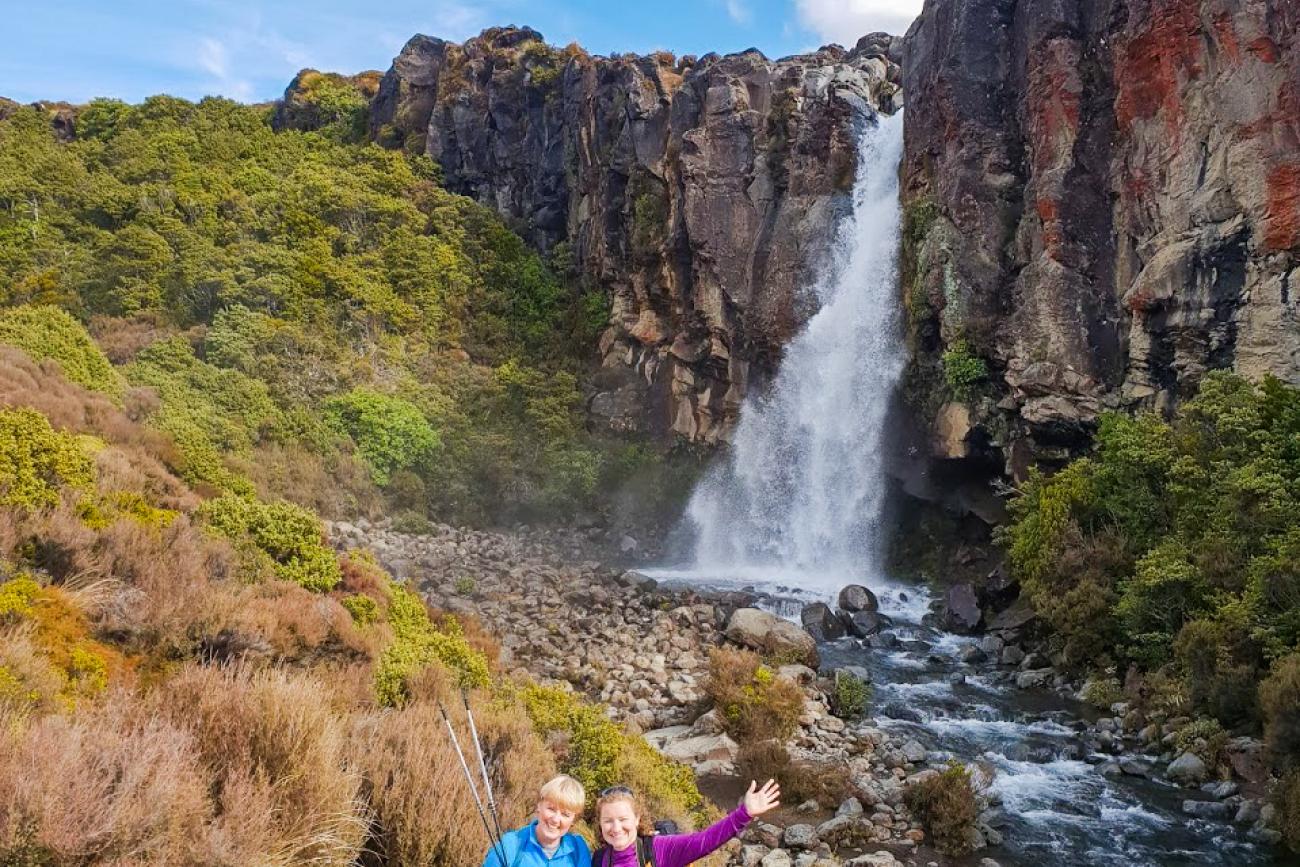
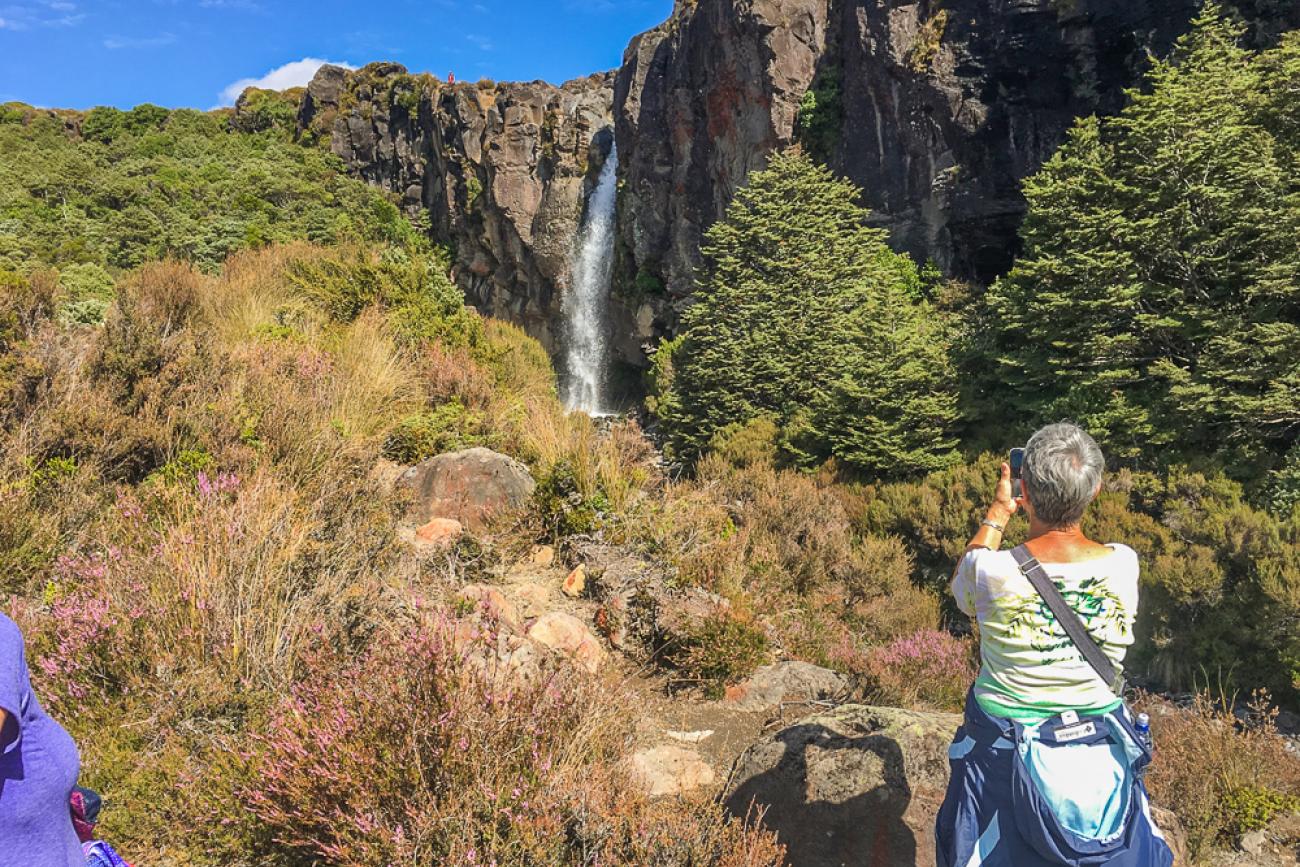
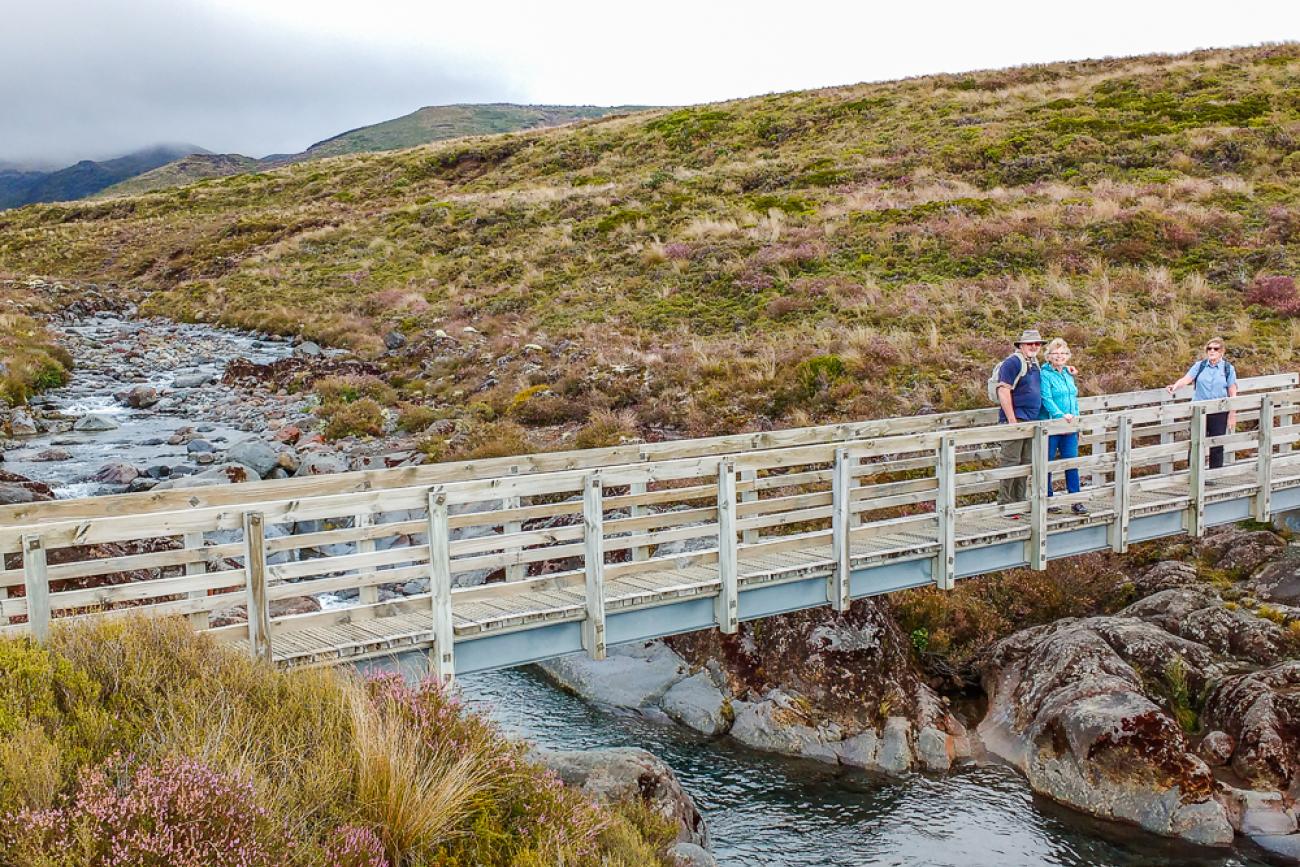
Walking the Taranaki Falls – Key Facts
Grade: Easy
How to get there: The track starts from Whakapapa Village on SH48. It starts 100m/330ft below the Tongariro National Park (aka Whakapapa) Visitor Centre on Ngauruhoe Place.
Options for Guided/independent: Easily walked independently. Information available at Tongariro National Park Visitor Centre. Guided tours are available – prearrange at the DOC Visitor Centre.
Distance: 6 kilometres/4 miles
Options: There are lots of other short walks in Tongariro National Park, ask at the Visitor Centre
Time: 2 – 2.5 hours
Highest Point: Around 1100m/3600ft.
Elevation change: Approx. 115m/377ft.
Facilities: Toilets near the Visitor Centre.
Wildlife: Whiteheads, grey warbler, rifleman, pipits, fernbirds, skylarks.
Flora: Tussock, alpine shrubs, beech forest, umbrella ferns, mountain toatoa, red tussock, manuka.
Walking Tips: Walk the Upper Falls track first and return on the Lower Falls track. There are less uphill sections this way. Even though it’s a short walk, make sure you take warm clothes and someone knows where you are, the weather can still change very quickly in this alpine environment.
More Info: See the info on the Department of Conservation website about short walks in Tongariro National Park.
See our tours which include short walks in Tongariro National Park
Kakapo 21 Day North & South Island Tour
Kaka 17 Day North & South Island Tour
Wellington City Walk – Southern Walkway
From the golden sand of Oriental Bay on the waterfront you’ll head up, spotting turn-of-the-century homes, bound for the slightly off-track Mount Victoria lookout. Enjoy striking views of the city fringing the harbour, Somes Island and Miramar Peninsula before wandering shaded track through some of Wellington’s best parks. Towards the southern end, on a good day, you may be lucky to spot the South Island’s Kaikoura ranges. Take a picnic, take your time.
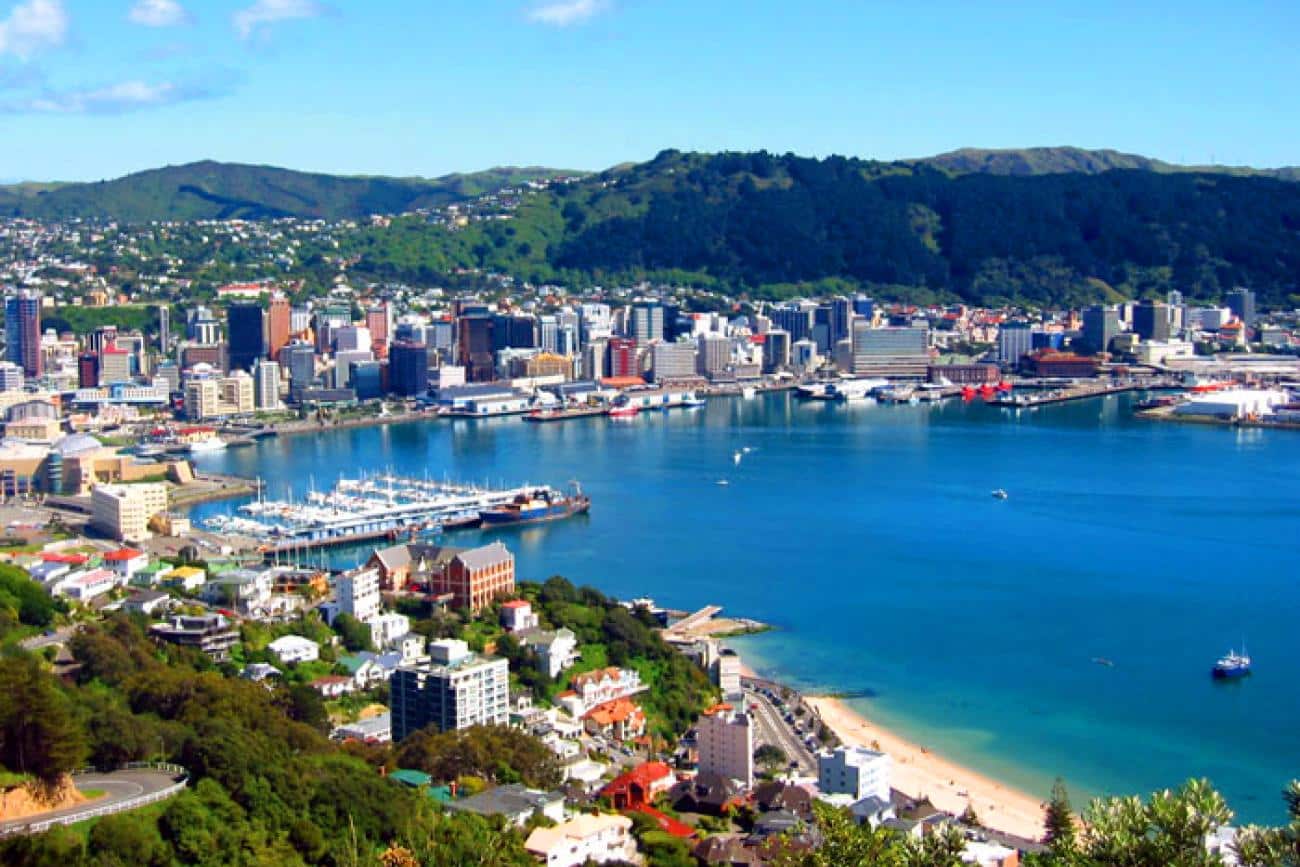
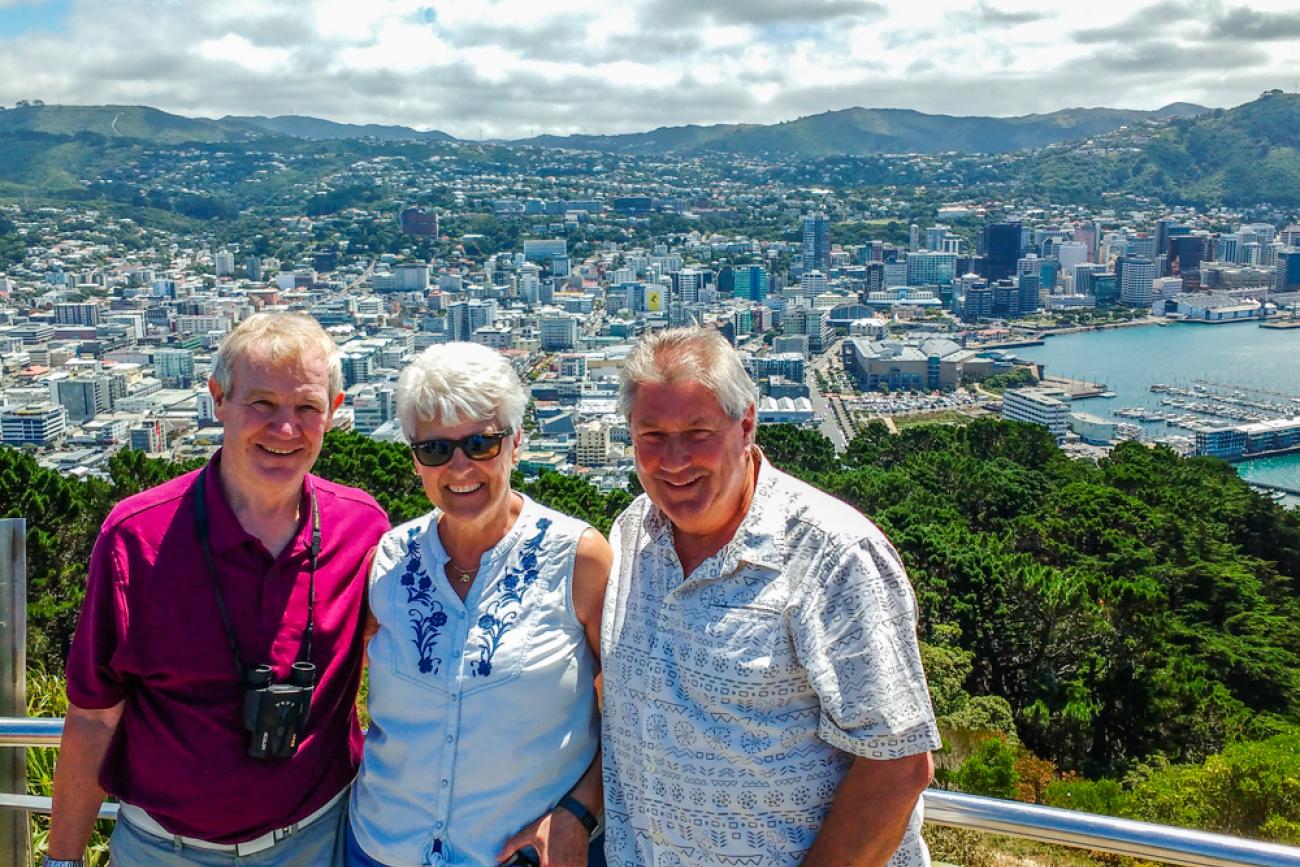
Wellington City Walk – Key Facts
Grade: Easy although steep in places. Average fitness required.
How to get there: From north to south – track starts near the intersection of Oriental Parade and Carlton Gore Road.
From south to north – track begins in Shorland Park, Island Bay. For public transport options, check the Metlink website.
Options for guided, independent:
Easy walked independently. Pink bollards mark the walkway.
Distance: 10.7 kilometres (6.65) miles one way
Walk Options: Can be walked in stages. Access points from numerous suburban streets.
Time: 4 – 5 hours (one way).
Elevation change: 0 – 196m (643ft).
Facilities: Numerous seats and picnic spots along track. Toilets at Mount Victoria Lookout.
Wildlife: Fantails, grey warblers, waxeyes, tui.
Fauna: Exotic trees such as Bishop’s Pine, Monterey Pine, macrocarpa and various gums.
Native trees and flaxes.
Walking Tips: Include Matairangi (Mount Victoria) lookout (slightly off track). Return by bus, 30 minutes, from Shorland Park, Island Bay end. Use ‘Welly Walks’ app, to keep on track.
More Info: See more info and a walk map on the Wellington City website here.
See our tours which include walking in Wellington
Kakapo 21 Day North & South Island Tour
Kaka 17 Day North & South Island Tour
Haruru Falls (Bay of Islands)
Wander sheltered forest and enjoy the boardwalks over gentle waters through mangroves which is a highlight for many walkers. At low-tide you may spot scuttling crabs. An undemanding, leisurely walk, the picturesque horse-shaped falls will be heard before you see them. Hot? Cool off with a swim in the fresh water.
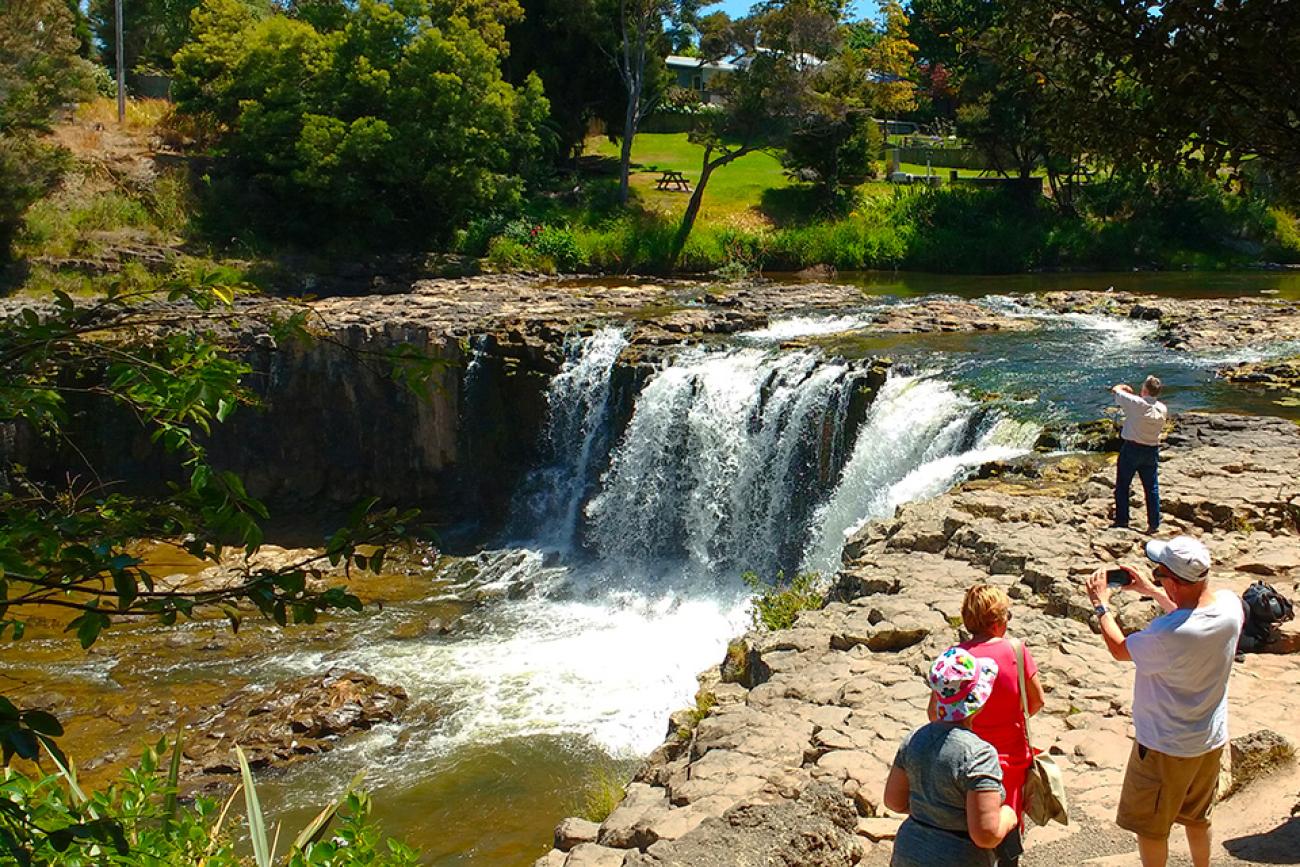
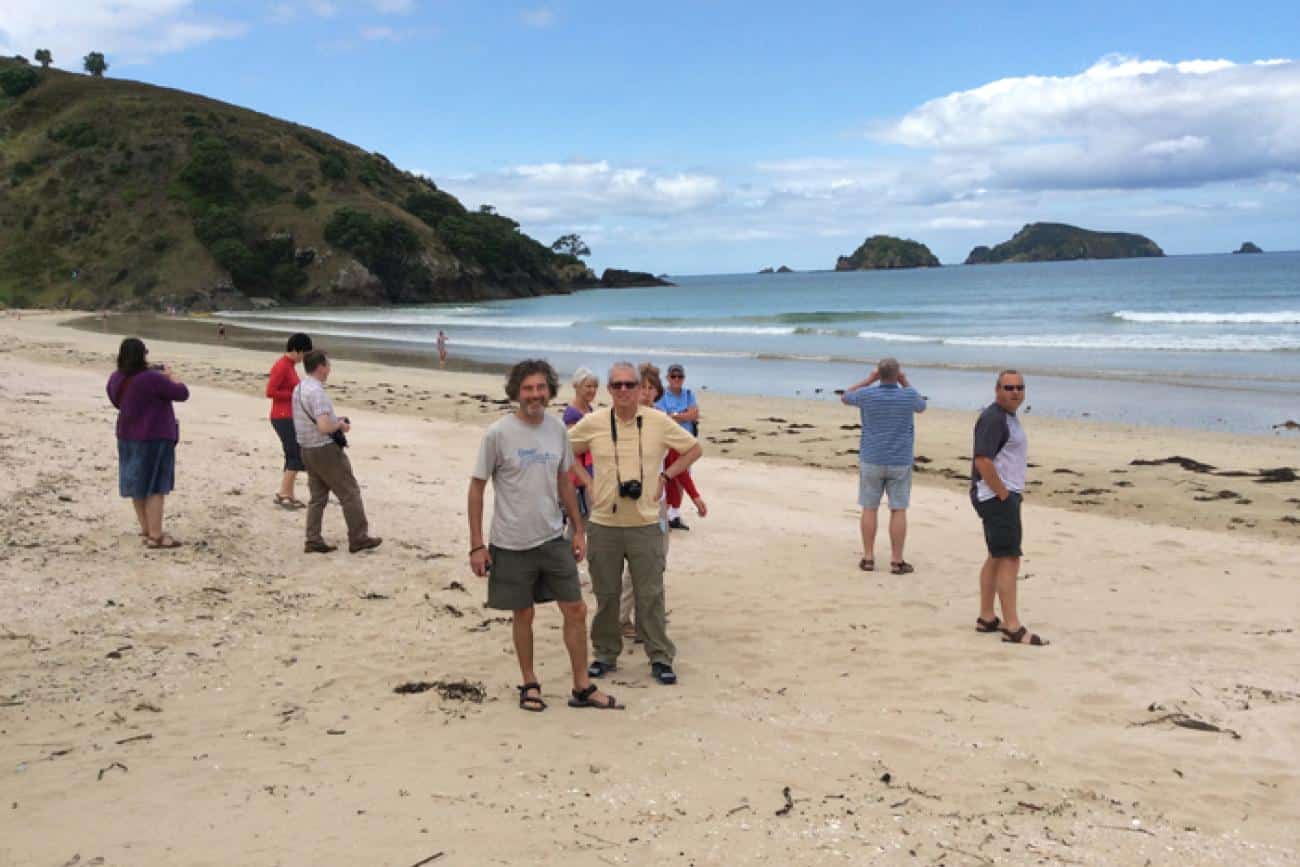
Haruru Falls Walk – Key Facts
Grade: Easy (slippery when wet)
How to get there: Entrance is on the opposite side of the road from Waitangi Treaty Grounds.
Options for guided, independent: Easily walked independently, no guided options available.
Distance: 6 kilometres (2.9) miles one way.
Options: Kayak one way and walk return. A Kayak hire company is on the beach near the Waitangi River Bridge. Walk one way and taxi back to Paihia or get someone to drop you off.
Time: 2.5 hours one way.
Elevation change: 105m/344ft.
Facilities: Toilets at Haruru Fall’s carpark.
Wildlife: Crabs at low-tide, heron, shrimp, shags, kingfisher.
Flora: Native trees including pohutukawa, mangrove forest.
Walk Tips: Take your swimming gear to swim at the falls.
More Info: Visit the Bay of Islands website.
Flagstaff Hill Track – Bay of Islands
This short walk will take you through native bush – try and spot the endangered North Island weka – past a stream and wetland, and on up to historical Flagstaff Hill. Fabulous views of many of the one hundred and forty four islands which give the Bay of Islands its name, Russell, Waitangi and Paihia will be spread out before you. You may even get lucky and spot dolphins in the bay. It was here that Māori cut down the flagpole flying the British flag four times back in the 1840s – find out the story on the plaque at the summit.
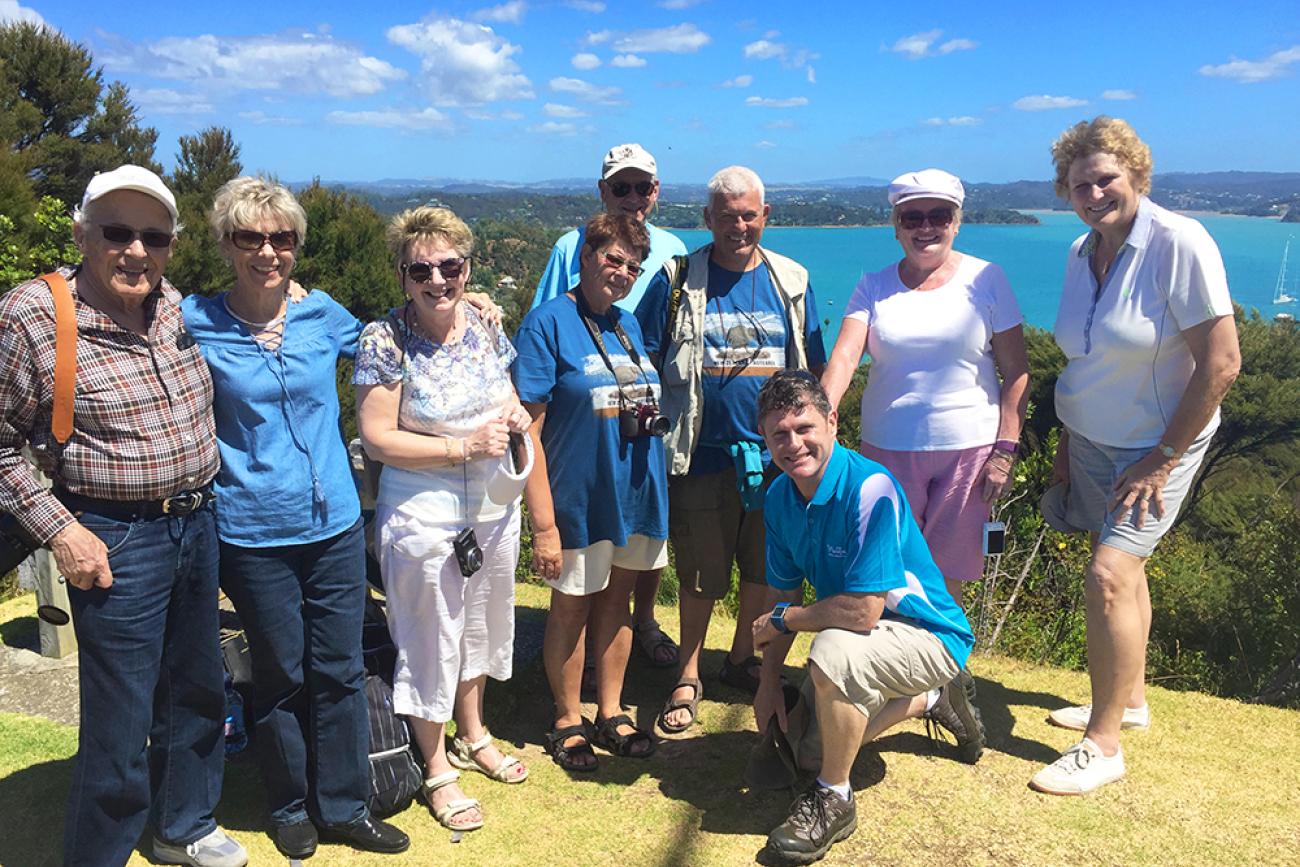
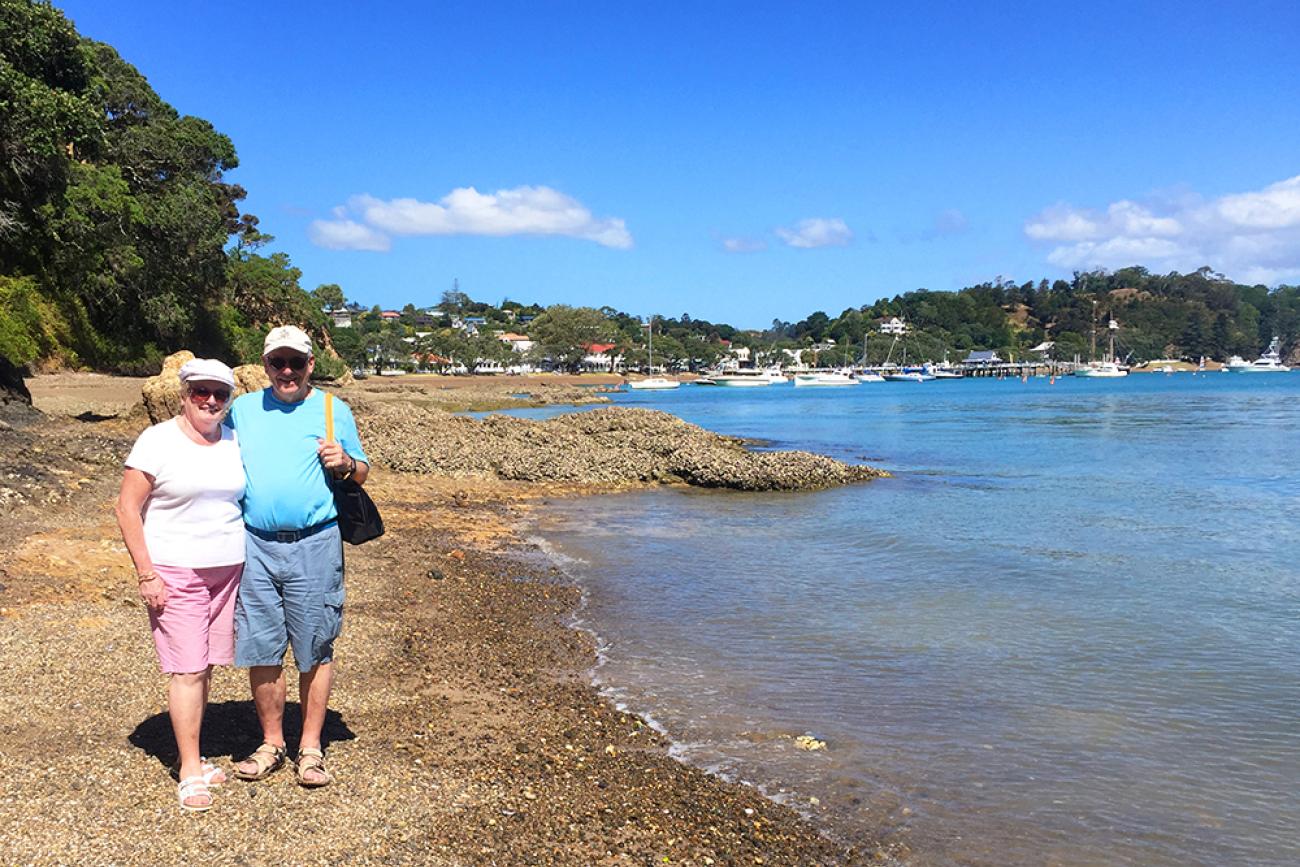
Flagstaff Hill Walk – Key Facts
Grade: Easy. Moderate level of fitness – uphill climb.
How to get there: Track is located in Russell, a 15 minute ferry ride from Paihia Wharf. Ferries depart Paihia on the half hour, returning from Russell on the hour.
Options for guided/independent tour: Easily walked independently.The Russell Booking and Information Centre, on Russell Wharf, offers a one hour Cultural Walking Tour of Russell which includes Flagstaff Hill. Runs 10a.m., 12, 2p.m. and 4p.m. $20/person.
Length: 2.5 kilometres (1.5 mile) loop.
Options: High tide: Track starts corner of Wellington and Kent Streets, Russell.
Low tide: Starts close to the boat ramp at the northern end of Russell Beach, intersection of The Strand and Wellington Street. It is possible to walk along the beach to Watering Bay/Waipara. Then take the Flagstaff Hill Loop Track. Take the left-hand fork and climb through bush to Titore Way. Turn right onto the road, walk 300m/1000ft to where a sign points out the final section of track to Flagstaff Hill/Te Maiki summit.
Time: 1 hour return.
Change in elevation: 0 – 100m (328ft).
Facilities: Food and toilets available in Russell township.
Wildlife: North Island weka, fantail, tui.
Flora: Kanuka/manuka scrub, matipo, hange-hange, shrub coprosmas, shrub hardwoods such as mahoe, ferns, totara, cabbage trees, karo, pohutukawa, renga lilies.
Tips: Wear sturdy shoes. Ask for directions at the Russell Booking and Information Centre where Heritage trail booklets are available. Make sure you know what the tides are doing if you plan to walk along the beach one way.
More Info: Visit the Department of Conservation website page about Flagstaff Hill.
See our tours which include walking in the Bay of Islands
Kakapo 21 Day North & South Island Tour
Rotorua Redwoods Walk – Quarry Lookout Track
Stroll along track shaded by towering redwoods before climbing to the quarry lookout for views over the redwoods, city centre and the great expanse of Lake Rotorua. A pretty, scenic trail including a raised walkway over the warm, clear waters of a thermal pond fringed by ferns.
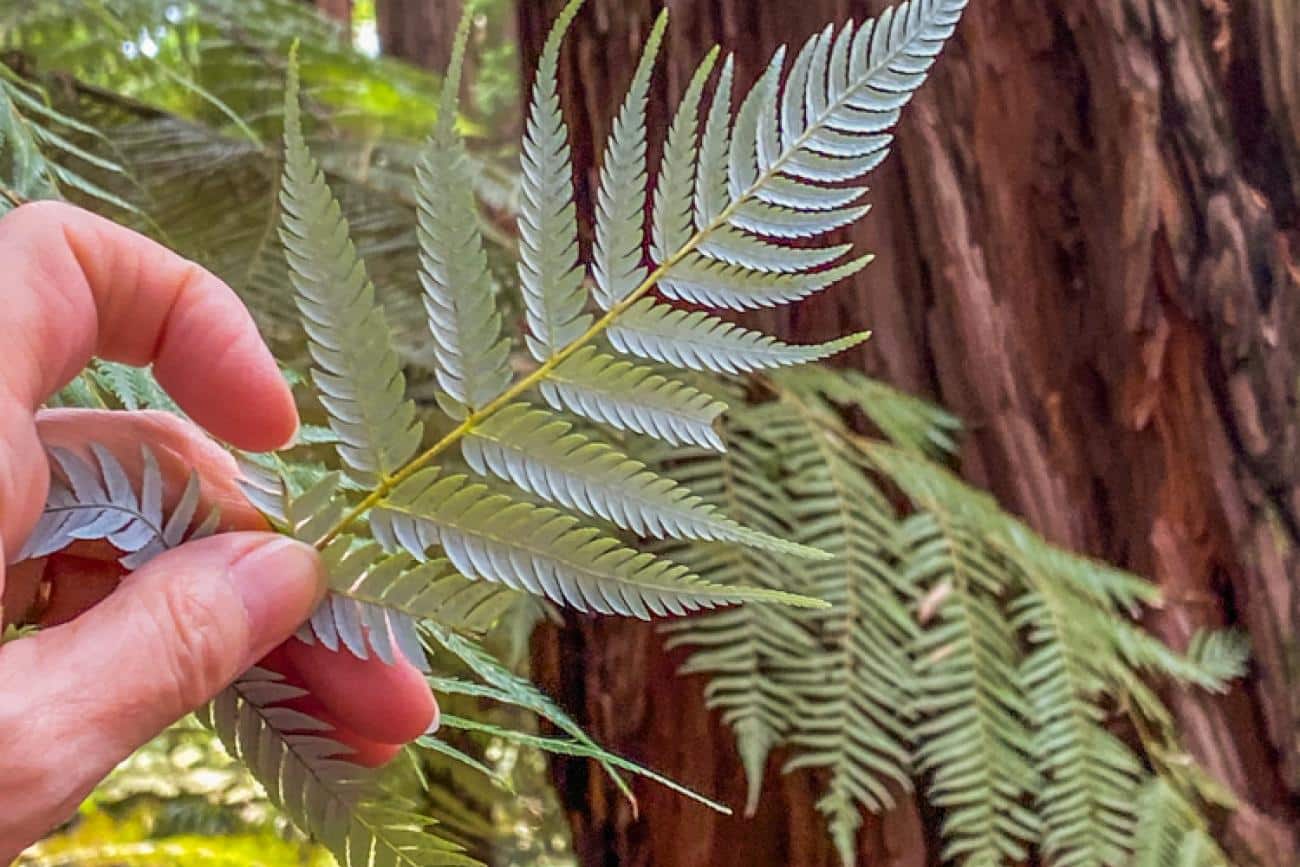

Rotorua Redwoods Walk Key Facts
Grade: Easy, uphill to the viewpoint and a steepish descent.
How to get there: Walk starts at Redwoods Visitor Centre on Long Mile Road, off Tarawera Road, 5 kilometres/3.1 miles from the city centre.
Walk from city centre: Via the Rotorua Walk/Cycle way starting on Amohau Street just outside Sudima Hotel. Follow the blue & white walk/cycle symbols across Sulphur Bay, under Te Ngae Road and along the Puarenga Stream. Turn left at 99 Sala Street, crossing the bridge, and keep following the symbols. You will walk through forest and come out across from the Redwoods Visitor Centre car park.
Bus from city centre: Operates Monday to Sunday except public holidays. Take bus route three: Owhata, from the main bus stop on Pukuatua Street. Leaves ½ hourly from 6.50am. Get off at the bus stop on Tarawera Road near the corner of Long Mile Road. There is a big black & white sign stating “The Redwoods”. The Visitor Centre and I-Site is about 1kilometre/0.6 miles from the corner.
Options for guided, independent: Easily walked independently. Signboards mark the track.
Distance: 4.8km/3 miles.
Options: There are four other walks in the forest of differing lengths.
Time: 1.5 hours
Elevation change: 110m/360ft.
Facilities: Bench seats throughout the redwoods. Toilets, snacks and refreshments at the Redwoods Visitor Centre.
Wildlife: Birds include tomtits, chaffinches, waxeyes, Californian quails, fantails, tui, bellbird, and native pigeon.
Flora: Redwoods, Douglas fir, European larch, walnut, ferns, eucalyptus.
Tips: Maps available at the Redwoods Visitor Centre.
More Info: Visit the Redwoods website.
See our tours which include walking in Rotorua
Kakapo 21 Day North & South Island Tour
Kaka 17 Day North & South Island Tour
Small Group Tours with lots of walking
Because we know how rewarding it is to explore New Zealand’s landscapes on foot, we’ve tailor-made all of our New Zealand small group tours to incorporate as many opportunities for day walks as possible. Guests on our tours visiting the North Island have the opportunity to walk all of the walks mentioned above (except the full Tongariro Crossing). Does the sound of a waterfall tumbling over an ancient lava flow inspire you, or is it the groves of giant Redwood Trees that makes you want to lace up your walking shoes? One one of our small group tours, you can experience all of these walks, and more.
MoaTrek are a family owned New Zealand company. We’re delighted to present to small groups of visitors New Zealander’s favourite locations and some of our secret places. We’ve been showing guests to these and many other of the best day walks in the North Island since 1971. Jump on one of our tours for the easiest way to enjoy these stunning walks.
Read more about Walking in New Zealand
6 Best Day Walks in the South Island


